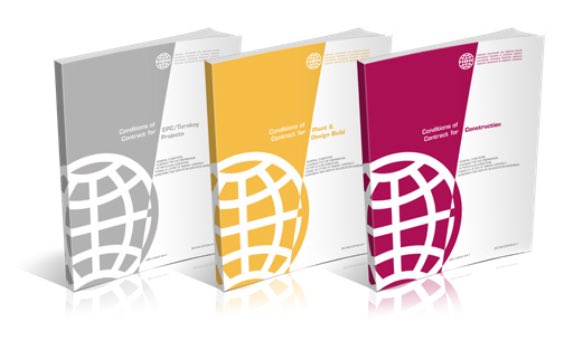Sub-Clause 3.7 of the FIDIC Red and Yellow Books covers the vital role of the Engineer to determine an open issue (disputed claim). This, in case the Parties are not able to agree. The Silver Book has the same clause. But, as the latter doesn’t have the role of “Engineer”, the main actor is the Employer’s Representative. This clause represents one of the major changes introduced with the second edition, 2017 versions.

Determination in FIDIC 1999
Originally, the Sub-Clause 3.5 of FIDIC 1999 contained only two paragraphs. This clause just established the general principle of determination by the Engineer (or Employer’s Representative in the Silver Book).
The “2017” updated clause on determination
The updated clause has a step-by-step procedure. The starting point is the consultation of the Parties to encourage them to reach an agreement. If this is not successful, the Engineer shall determine the matter. This determination can either become final and binding (after exhaustion of a time period) or can be challenged in front of the DAAB. If you want to read more about the changes introduced with FIDIC 2017, you can click here.
In the 2017 “Rainbow Suite”, the Engineer shall be deemed to act for the Employer (Sub-Clause 3.2). However, this is not the case when making a determination under Sub-Clause 3.7. Clearly, determination is the first stage – the most practical one, close-to-the-job – of dispute avoidance and resolution. The Engineer, being perfectly aware of the details of the project, can therefore act swiftly.
Click on the short movies in each of the sub-sections below to see the visual material we use for training. Of course, the actual training is more lively with explanatory comments and sharing of real-life examples.

Detailed Sub-Clauses on determination in FIDIC 2017
Introduction and symbols used
In the below presentation of the relevant clauses, we use visual representations. This allows us to analyse in-depth the new FIDIC “Rainbow Suite” clauses regarding determination and facilitate understanding / stimulate memory.

For example, the symbol on the left represents the determination by the Engineer.

We represent a binding determination by an encircled chain.
Sub-Clause 3.7.1 – Consultation to reach agreement
In the first step, the Engineer’s work is to push the Parties, like a mediator, to reach an agreement. Obviously, agreements resulting from the free will of both Parties are the most successful resolution one can imagine:
Sub-Clause 3.7.2 – Engineer’s Determination
If the Parties cannot reach an agreement, the Engineer must act and make a fair determination:
Sub-Clause 3.7.3 – Time Limits
Successful projects move forward at good pace. Any issues (claims and disputes) can impact the progress in a substantial way. FIDIC has tried to avoid project delays by limiting the time for the Parties to reach agreement. This applies also to the time available to the Engineer to determine. By establishing what happens if the given time frame is not respected, the 2017 versions are improved :
Sub-Clause 3.7.4 – Effect of agreement or determination
A determination that has no effect – mostly, because challenged in the subsequent stage of dispute resolution – is worthless. FIDIC now clearly establishes that payments shall anyway be made in the next Statement / Payment Certificate:
Sub-Clause 3.7.5 – Dissatisfaction with Engineer’s determination
Each Party may challenge the Engineer’s determination. If neither Party does this within 28 days, the determination shall become final and binding. If a Party fails to comply with an agreement or determination, the other Party can immediately refer this failure to arbitration. And, arbitral awards are enforceable through courts (New York Convention)…
Conclusions
Many commentators complain that FIDIC 2017 is much longer than its predecessor (1999). The extra clarifications explained in this post justify, I believe, the extra length of Sub-Clause 3.7. We can mention
- the role of the Engineer,
- step-wise approach to dispute resolution,
- “deemed” clauses,
- enforcement of determinations and fall-back solutions.
The innovative way of working by Intel on its construction projects has similarities. I have described this in a previous post named “Speaking with Howard Carsman from Intel about innovation in dispute resolution“. Both FIDIC’s Engineer and Intel’s Third Party Neutral perform decisive roles before escalating to subsequent steps, dispute boards and arbitration.
About AfiTaC
AfiTaC.com is the blog on commercial and contractual subjects for the Project Businesses (Construction, Infrastructure, Oil & Gas, Power & Renewable, Water Supply & Sanitation, etc). Its objective is to stimulate reflection, learning, convergence to balanced contracts and positive dispute resolution. You can subscribe to our newsletter by writing to “newsletter@afitac.com”. You can also connect to our LinkedIn page. Engagement with the readers is what keeps us going. So, don’t hesitate to exchange with us by commenting here below, liking our publication on LinkedIn and writing to us “info@afitac.com”.

1 Comment
FIDIC contracts, latest status and developments - AfiTaC · 27 November 2019 at 22 h 15 min
[…] With the 2017 versions, the Engineer is back as a central figure to avoid disputes. This can be seen in the more elaborate clause on Agreement and Determination. […]